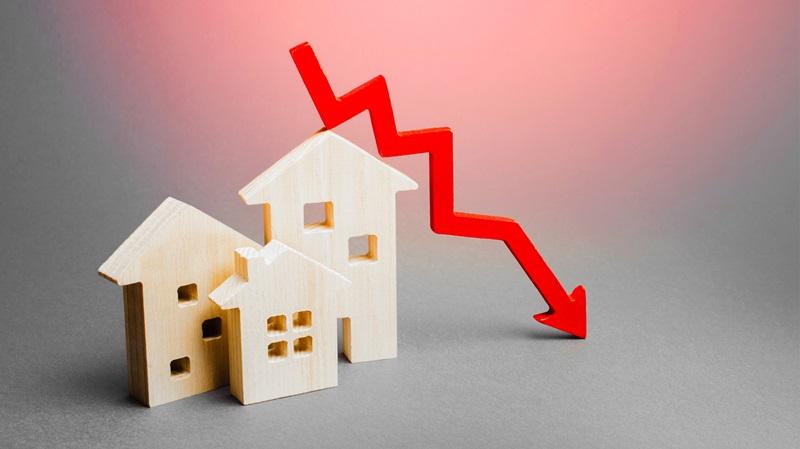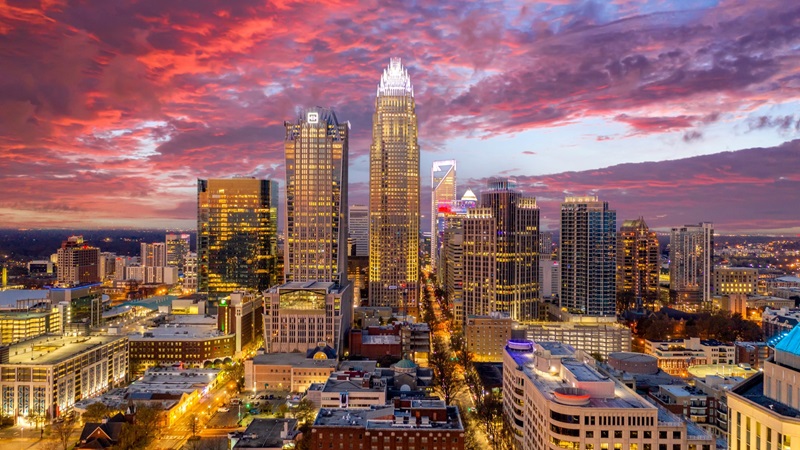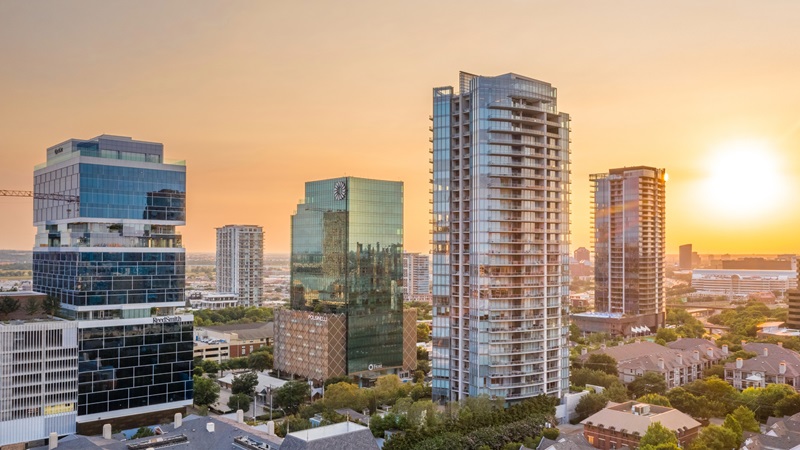
The multifamily market kicked off 2024 with minimal rent growth. At the national level, year-over-year growth has slowed to 0.8 percent. Key factors behind the dwindling growth include high supply and insufficient demand.
But some markets have been hit especially hard, with asking rents declining year over year. All in the Sun Belt, these 10 markets are struggling with the greatest drops in rent growth of all major markets in the country.
1. Austin, TX

Still reeling from the construction boom kicked off during the pandemic, this Texas market is leading the nation for greatest decline in year-over-year asking rent. With rent growth for the first quarter at negative 5.6 percent, according to CoStar data, Austin is facing rent declines more than 2 percentage points greater than the next market on the list.
During the first years of the pandemic, the Austin population skyrocketed by nearly 100,000 people, or over 4 percent of its 2020 population, according to the Austin Chamber of Commerce. As a result, the renter population swelled. To meet this demand, new multifamily development projects surged, leading to the massive construction pipeline that continues to deliver today, even as demand has tapered off.
Compared to other Sun Belt markets that also saw a flurry of new construction following a pandemic-era demand boom, Austin’s supply pipeline is especially high. In absolute numbers, Austin had the third highest number of units under construction at the end of 2023, following New York and Dallas–Fort Worth. But when adjusted for inventory size, its under-construction units made up a shocking 15.22 percent of its total inventory, a higher share than in any other major market.
As a result of this oversupply, the Austin market is facing the highest multifamily vacancy rate in the country, which closed the first quarter at 14.34 percent. Multifamily recovery is likely to be slower in Austin than in any other major market.
2. Jacksonville, FL

Jacksonville posted rent growth of negative 3.26 percent in the first quarter of 2024, continuing a negative trendline. Rents have been in decline in Jacksonville since mid-2023.
About 8,500 new units have been delivered in Jacksonville in the last 12 months, and 7,300 additional units are on the way. This follows an increase in market-rate multifamily inventory of over 20 percent within the last five years. Like Austin, Jacksonville saw significant in-migration during the pandemic, with over 61,000 new residents, or 3.8 percent of its 2020 population. This inflow, the second highest in the country, kicked off significant multifamily development.
At nearly 14 percent, vacancy in the North Florida market is at a record high, but it’s expected to gradually drop through the rest of this year and beyond, as demand picks up later in the year. Supply is on track to slow down. Under-construction units made up a relatively small share of total inventory, 8.29 percent, as of the fourth quarter of 2023.
3. Raleigh, NC

Experiencing high demand but even higher supply, Raleigh’s multifamily market has seen year-over-year rent growth continue to decelerate since mid-2022. Rent growth hit negative 3.10 percent for the first quarter of 2024, marking the fourth consecutive quarter of rent growth below zero.
After high in-migration during the pandemic, Raleigh saw a boom in new multifamily development. The Raleigh metro ranked third for largest pandemic-era inflow relative to population size, after Austin and Jacksonville. Even now, Raleigh continues to boast strong population growth, with over 2 percent growth between 2022 and 2023.
The supply–demand imbalance has pushed Raleigh’s multifamily vacancy rate into double digits. The vacancy rate in the North Carolina capital is currently sits at 13.19 percent. Raleigh’s booming construction pipeline is likely to maintain supply-side pressures throughout this year. Under-construction units made up 10.71 percent of total inventory at the end of last year, putting Raleigh in the fifth spot for highest construction totals as share of inventory.
4. Orlando, FL

Coming in at negative 2.85 percent this quarter, rent growth in Orlando has remained in negative territory since the second quarter of last year. This marks a modest improvement over the negative 2.91 percent growth posted at the end of last year.
The Orlando multifamily market has faced an imbalance of supply and demand, driving down asking rents. Under-construction units made up over 10 percent of total inventory by the end of 2023, just behind Raleigh.
However, the outlook is positive for the theme park capital. After economic uncertainty drove down renter demand in 2022, demand came roaring back to life last year. Orlando remains a popular destination for renters, and demand is expected to continue its upward trajectory throughout 2024, ultimately catching up to supply.
5. Atlanta, GA

Still struggling with an onslaught of new supply, the Atlanta metro has seen year-over-year rents fall by 2.68 percent. The Georgia capital and the surrounding area were a top destination for in-migration during the pandemic, which kicked off a wave of new construction that is continuing to deliver today.
This combination has driven up vacancies to 11.96 percent, and this rate is expected to only climb. Supply-side pressure is especially acute among luxury four- and five-star properties, which make up close to 80 percent of all new construction. In recent months, the metro has consistently ranked among the markets facing the greatest rent growth declines.
Zooming out to the longer term, however, reveals a more positive outlook. Atlanta ranks among the top destinations for renters, and the supply pipeline is expected to ease, as construction starts taper off later in the year.
6. San Antonio, TX

With year-over-year rent growth of negative 2.58 percent, San Antonio is one of three Texas metros to make this list. This quarter marks the fourth consecutive quarter that San Antonio has seen asking rents decline year over year. Like other metros on this list, San Antonio was a popular destination for pandemic-era migration. Greater San Antonio ranked fifth for net migrants as a percent of the total population in 2020 through 2022.
Multifamily vacancy in San Antonio hit double digits at the beginning of 2023 and has continued to rise. Vacancy in the Alamo City hit 12.67 percent for the first quarter of this year, thanks to a significant imbalance between supply and demand. Inventory in San Antonio has been growing at one of the fastest rates in the country. While the construction pipeline is expected to slow, supply-side pressure will likely remain high throughout 2024 and into 2025.
7. Charlotte, NC

The first quarter of 2024 marks the third straight quarter of negative rent growth for the Charlotte multifamily market. The second North Carolina metro on this list, Charlotte has seen asking rents drop by 2.48 percent year over year. After hitting double digits in mid-2023, the multifamily vacancy rate in Charlotte rose to 12.23 percent this quarter.
Charlotte saw a population boom during the pandemic and continues to rank among the top metros for population growth. While demand in the Charlotte metro is significant, supply hit an all-time high in 2023. The 13,400 units delivered that year marked a 25-percent increase compared to the next-highest year on record. Supply is expected to continue to expand in 2024, with Charlotte only second to Austin for highest share of under-construction units relative to total inventory.
8. Nashville, TN

Facing a record-high wave of supply, the Nashville multifamily market has seen rents decline for four quarters in a row. Year-over-year rent growth dropped to a low of negative 2.04 percent in the first quarter of the year.
Vacancy, which has hovered around 11 percent for the last four quarters, hit 11.61 percent for the first quarter of 2024. Renter demand has been insufficient to meet record-high supply, even as population growth in the Music City remains strong.
With under-construction units making up 13.68 percent of total inventory, Nashville ranks third nationwide among major markets for highest share of total inventory, after Austin and Charlotte.
9. Phoenix, AZ

The only Southwestern market to make the top 10, Phoenix is facing rent growth of negative 1.76 percent. Like the other Sun Belt markets on this list, the Arizona metro is facing an influx of new construction exceeding renter demand. This has driven down year-over-year asking rents. Rent growth has remained negative since late 2022.
But the market fundamentals in the Valley of Sun remain strong. The Phoenix economy has grown increasingly diversified, with robust job growth. As an example of its resilience, the Phoenix area recovered from pandemic losses a full year ahead of the national average. Strong job and population growth, combined with the area’s low inventory of single-family homes, contribute to a favorable outlook for the local multifamily industry. Rent growth is expected to turn positive before the end of the year.
Watch: Take a deep dive into the state of the Phoenix multifamily market with CoStar’s Connor Devereux.
10. Dallas–Fort Worth, TX

The largest metropolitan area in Texas, the Dallas–Fort Worth metroplex has seen multifamily rents decline by 1.38 percent. This marks the fourth consecutive quarter that rent growth has fallen into negative territory, although the situation in Dallas–Fort Worth is less dire than in some other Sun Belt markets. Vacancy hit double digits at the end of 2024 and reached 10.69 percent in the first quarter of 2024.
This North Texas market ranks among the top markets for construction. With a whopping 59,000 units under construction at the end of 2023, DFW had the nation’s second largest construction pipeline among all major markets. But a closer look reveals a more nuanced picture.
Not only has the total number of units under construction fallen from a peak in 2023, but the effect of this incoming supply has been less pronounced here than in other markets. The Dallas–Fort metro constitutes the fourth largest metropolitan area in the United States, with a multifamily inventory of 855,000 units, and the metroplex has continued to see an influx of new population. The counties seeing the greatest levels of construction, Collin and Denton, have also received the highest share of the in-migration to the metro.
As a result, new supply in the North Texas metro has made up a relatively small share of inventory. At the end of 2023, under-construction units in Dallas–Fort Worth made up only 6.9 percent of the total inventory — nearly half the share seen in Austin, Charlotte, and Nashville. This suggests that Dallas–Fort Worth will see a smoother and quicker recovery than other popular Sun Belt markets.
Looking for more multifamily insights?
CoStar’s Jay Lybik explores which markets are leading and lagging in rent growth. You don’t want to miss this essential analysis.
For more insights, check out these articles and videos:







